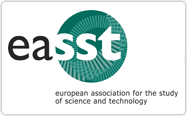Back to the Present of Automated Mobility
A Typology of Everyday Use of Driving Assistance Systems
DOI:
https://doi.org/10.23987/sts.122099Abstract
This article focuses on how car drivers domesticate technologies of automation and the way this might inform our understanding of potential shifts to a more automated mobility system. The current literature on automated mobility has mainly addressed drivers’ roles in terms of their attitudes towards—and acceptance of—an anticipated shift to high-level driving automation. In this article, however, we take a step back from expectations around automated mobility to explore the domestication of driving assistance technologies and systems already in use. The analysis is built on qualitative interviews with drivers of private cars in Norway. Based on our findings, we develop a typology of user-technology characterisations highlighting three themes of the drivers’ use (comfort, safety, and novelty) as well as two modes of engagements (modulation and non-use). Our analysis suggests that automation is likely to be an incremental and gradual process and that its eventual application depends on the specificities of the practices that it seeks to disrupt. Moreover, we argue that the governance of automated mobility needs to be attentive to the dynamic and unpredictable roles technology will have in processes of socio-technical change. In this context, we highlight the key roles of users in shaping processes of appropriation of both new technologies and broader innovations and argue that knowledge about technology domestication provides important insights to changes towards automation in our current mobility systems.
Downloads
Published
Versions
- 2024-09-15 (2)
- 2023-07-17 (1)
Issue
Section
License
Copyright (c) 2023 Gisle Solbu, Tomas Moe Skjølsvold, Marianne Ryghaug

This work is licensed under a Creative Commons Attribution 4.0 International License.





